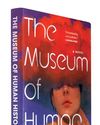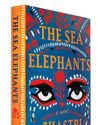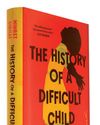Harnessing the power of hypnagogia

There is a special moment that occurs every day of your life when the veil between your conscious and unconscious mind becomes thinner. A magical moment when you are able to access a bottomless fountain of creative potential. That’s the good news.
The bad news is that every day you are letting this moment slip by.
Contrary to popular belief we don’t dive into sleep immediately. Instead sleep comes in gradually, like a tide. The waters of our unconscious slowly rise, breaching the shore of our conscious mind and eventually submerging it. This tidal ebb and flow occurs in ninety-minute cycles throughout the night, and with each cycle we slowly wade through five ever-deepening stages of sleep.
The stage that receives the most hype, especially among creative types, is the final stage of the cycle, REM sleep. That’s because during REM, or rapid eye movement, we have our most vivid dreams. Lots of artists and writers have used their dreams to inspire their work—one popular example is Stephen King, who dreamed a version of his 1987 novel Misery during a transatlantic flight—but there’s just one problem with this approach: REM occurs when our conscious mind is fully submerged and at its weakest. So although our creativity is high during our REM state, the likelihood that we will remember anything from it is quite low. The water is just too deep.
What writers need instead is a shallower pool in which to wade. One where we still experience the mind-altering potential of dreams but also have enough consciousness left to remember—and, better yet, even control—the imagery behind our closed eyelids.
Lucky for us there is such a state. It occurs during the first few minutes of sleep and again when we are just waking up, and it is rife with creative potential.
Esta historia es de la edición January - February 2019 de Poets & Writers Magazine.
Comience su prueba gratuita de Magzter GOLD de 7 días para acceder a miles de historias premium seleccionadas y a más de 9,000 revistas y periódicos.
Ya eres suscriptor ? Conectar
Esta historia es de la edición January - February 2019 de Poets & Writers Magazine.
Comience su prueba gratuita de Magzter GOLD de 7 días para acceder a miles de historias premium seleccionadas y a más de 9,000 revistas y periódicos.
Ya eres suscriptor? Conectar

Literary MagNet
When Greg Marshall began writing the essays that would become his memoir, Leg: The Story of a Limb and the Boy Who Grew From It (Abrams Press, June 2023), he wanted to explore growing up in Utah and what he calls \"the oddball occurrences in my oddball family.\" He says, \"I wanted to call the book Long-Term Side Effects of Accutane and pitch it as Six Feet Under meets The Wonder Years.\" But in 2014 he discovered his diagnosis of cerebral palsy, information his family had withheld from him for nearly thirty years, telling him he had \"tight tendons\" in his leg. This revelation shifted the focus of the project, which became an \"investigation into selfhood, uncovering the untold story of my body,\" says Marshall. Irreverent and playful, Leg reckons with disability, illness, queerness, and the process of understanding our families and ourselves.

THE MEUSEUM OF HUMAN HISTORY
READING The Museum of Human History felt like listening to a great harmonic hum. After I finished it I found the hum lingering in my ears. Its echo continued for days.

The Sea Elephants
SHASTRI Akella's poised, elegant debut, The Sea Elephants, is a bildungsroman of a young man who joins a street theater group in India after fleeing his father's violent disapproval, the death of his twin sisters, and his mother's unfathomable grief.

The History of a Difficult Child
MIHRET Sibhat's debut novel begins with God dumping rain on a small Ethiopian town as though. He were mad at somebody.

The Sorrows of Others
AS I read each story in Ada Zhang’s brilliant collection, The Sorrows of Others, within the first few paragraphs— sometimes the first few sentences— I felt I understood the characters intimately and profoundly, such that every choice they made, no matter how radical, ill-advised, or baffling to those around them, seemed inevitable and true to me.

We Are a Haunting
TYRIEK White’s debut novel, We Are a Haunting, strikes me as both a love letter to New York City and a kind of elegy.

RADICAL ATTENTION
IN HER LATEST BOOK, THE LIGHT ROOM: ON ART AND CARE, PUBLISHED BY RIVERHEAD BOOKS IN JULY, KATE ZAMBRENO CELEBRATES THE ETHICAL WORK OF CAREGIVING, THE SMALL JOYS OF ORDINARY LIFE, AND AN ENGAGEMENT WITH THE NATURAL WORLD WITHIN HUMAN SPACES.

The Fine Print
HOW TO READ YOUR BOOK CONTRACT

First
GINA CHUNG'S SEA CHANGE

Blooming how she must
WITH ROOTS IN NATURE WRITING, ENVIRONMENTAL JUSTICE, POETRY, AND PHOTOGRAPHY, CAMILLE T. DUNGY'S NEW BOOK, SOIL: THE STORY OF A BLACK MOTHER'S GARDEN, DELVES INTO THE PERSONAL AND POLITICAL ACT OF CULTIVATING AND DIVERSIFYING A GARDEN OF HERBS, VEGETABLES, FLOWERS, AND OTHER PLANTS IN THE PREDOMINANTLY WHITE COMMUNITY OF FORT COLLINS, COLORADO.